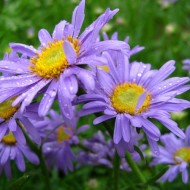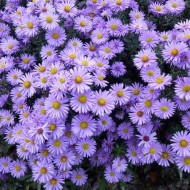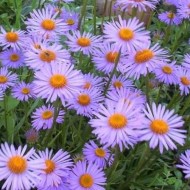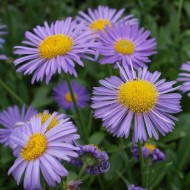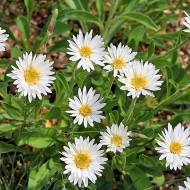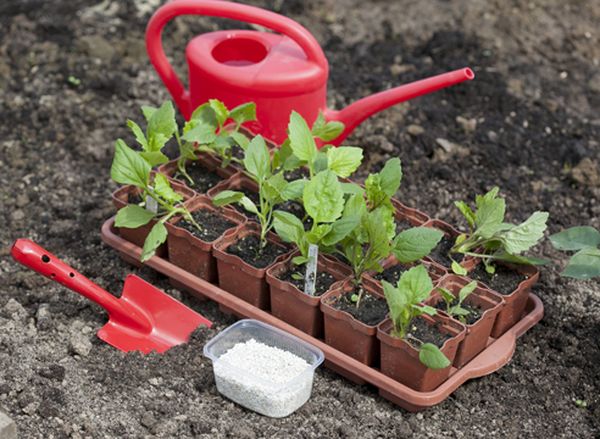Alpine aster - a bright accent on your flower bed
Content
Features of the variety
Aster is a ground cover plant. The root system of the plant grows in a horizontal direction, which gives rise to the shape of the shrub, resembling a carpet. Shoots of alpine asters are erect, with single inflorescences at the top. The flower shape and diameter, reaching 6 cm, make them look like a chamomile. The flowering period of the plant is quite long: it begins at the end of May and lasts until autumn. Aster blooms especially actively for 4 weeks. The color range of the inflorescences is impressive - from white to bright purple.
Video "How to sow Alpine aster"
In this video, an expert will tell you how to properly plant alpine aster in the garden.
Varieties
The variety of varieties makes the autumn shrub very popular with gardeners. Before the owner of the alpine beauty, a lot of options for decorating a summer cottage or front garden open up. The variety of colors allows you to form whole compositions from garden plants. The most famous varieties of asters are:
- Albus. The low shoots are densely dotted with rich green leaves, and at the top are delicate white flowers.
- Gloria. Inflorescences of sky-blue shades, small in diameter - up to 3 cm.
- Goliath. Quite large lilac flowers, the diameter of which reaches 6 cm.
- Rosea. The flowers are pinkish, small.
- Alpine pink aster. Early flowering variety, buds appear in mid-May. The inflorescences are pink in color and 4 cm in diameter.
- Alpine blue aster. Large flowers have an unusually beautiful combination of blue and purple shades.
- Violetta. The flowers are small, pale blue shades.
Growing
The shrub is unpretentious, but there are moments that are of fundamental importance when growing. For example, landing. It must be performed correctly, taking into account all the nuances inherent in the chosen method.
In growing seeds, the quality is the decisive factor. The germination rates depend on this. In regions with a temperate climate, aster seeds are sown in the open ground in early April. To form a greenhouse effect, which will prevent the soil from freezing, the planting is covered with plastic wrap. The first sprouts can be seen in a couple of weeks. With their appearance, the plant is planted in a flower bed. By the end of summer, inflorescences are formed on the tops of the shoots. The first buds of perennial asters are not cut off, as this injures the plant before wintering.
Caring growers prefer seedlings. This method is more delicate, the risk of planting freezing is excluded, because containers with seeds winter in a heated room. To obtain high-quality seedlings, you need to observe several important points:
- Priming. The soil for the future aster should be nutritious, most often it is a mixture of garden soil with a rotted mullein or a special flower substrate.
- The presence of drainage holes.
- Sufficient illumination. It is preferable to place the container with seeds on the southern windowsills.
Aster seeds are deepened 1 cm into the moistened ground.With the appearance of sprouts, the container is moved to a place where the air temperature does not exceed 20 ° C. The grown sprouts dive. The procedure is optional for seedlings growing in separate containers. In early summer, the sprouts are transplanted into open ground.
Cutting is a method available even to a novice florist. The success of this procedure is ensured by observing some rules:
- use of quality cuttings;
- each stalk should have several leaves;
- treatment of slices with a stimulant to form the root system;
- preparation of nutrient soil;
- moderate soil moisture;
- covering the cuttings with foil;
- daily airing.
Dividing the bush is another effective way to grow alpine asters. A part of it is separated from the shrub along with the root and transplanted to a new place. The soil is pre-fed with organic fertilizers and dug up.
Care
The shrub does not need special care. To create favorable conditions for the plant, it is necessary to carry out the following procedures:
- Timely soil moistening. It is better to use settled water for irrigation.
- Weed control.
- Hilling and feeding.
Protection against diseases and pests
Certain varieties of the alpine beauty, such as Violetta, blue and pink asters, are quite resistant to pests and diseases. But uncomfortable growing conditions can provoke the first symptoms of the disease. In this case, you need to remove the affected areas, and treat the shrub with an antifungal agent. Bordeaux liquid, soap or ash solution are considered effective in the fight against insects.
Application in landscape
Alpine aster is actively used in landscape design. The plant is planted along curbs, in flower beds and rocky hills, near the shores of artificial reservoirs. The shrub is in harmony with decorative stones. Compositions from several varieties of asters look great. The shrub looks advantageous against the background of irises, alpine milkweed, loosestrife, chrysanthemums.
Growing a perennial shrub is within the power of even a novice gardener. The plant is unpretentious, resistant to cold weather.
The variety of shades of alpine aster allows you to create unsurpassed flower beds that will become a real decoration of the garden.


